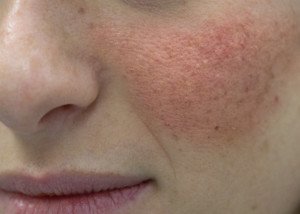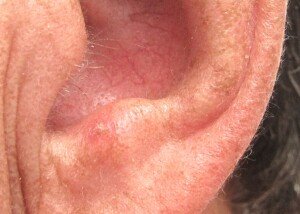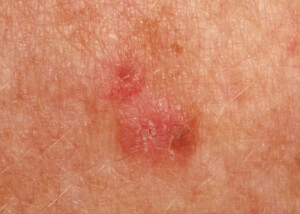
Yes, that deep bronze or golden tan on your young body looks awesome, but here’s a big question:
Why would actinic keratoses ignore you when it’s time to aggravate an adult who used to worship the sun? And, actinic keratosis is PRECANCER.
“Actinic keratoses are skin growths that occur from excessive ultraviolet ray exposure either from the sun or tanning parlor exposure,” says Dr. Janet Prystowsky, board certified dermatologist in New York, NY, with 30+ years’ experience.
Getting these red, rough and scaly patches all over your skin is the result of lots of sun exposure during your youth and teen years.
I have three very tanned teen nephews and one golden-tanned teen niece, plus a few younger.
The three bronze tanned are 19, 17 and 14. The one teen, 14, and his 12- and 9-year-old siblings spend plenty of time in the sun every summer. The tanning is sowing seeds for getting actinic keratosis.
Teens may not care what happens when they’re older, but sometimes, your sun worshipping past will start to haunt you as early as in your 30s.
“Actinic keratoses do not occur early after excessive sun damage; typically patients are in their 40s or older,” says Dr. Prystowsky.
“Once they start showing up, however, it keeps happening and becomes a chronic skin maintenance concern requiring a dermatologist to guide through various treatment options.”
And though 40s may still seem like a long way from your current teen life, the time is NOW to start thinking how lousy things will be as an adult if your now tanned skin were potentially full of scars years later that may result (not always) from removal.
These red-pink, rough scaly lesions are sun damage and begin gradually, and may go unnoticed for a time, especially if located on the legs, back and feet.
Actinic keratoses are quite common, but the extent of developing these precancerous patches is quite variable.
An adult who always had a “healthy looking” golden glow as a teen may end up suffering from hundreds of actinic keratoses lesions by age 45.
If you’re a teen, is all the tanning worth it? Many teens avoid smoking, but then these same teens will bask in the sun and proudly show their dark tans.
Is the deep tan really worth it? It has been said that teens aren’t clueful enough to imagine their life years down the road. Do you think you’re this clueless? If not, then imagine how you want your skin to appear years from now.
Actinic keratosis is directly tied to sun exposure and tanning in youth, and has the potential to leave dozens and even hundreds of unsightly red marks all over one’s body.
“Treatment of actinic keratoses is advised because they can evolve into skin cancers called squamous cell carcinomas and possibly basal cell carcinoma,” says Dr. Prystowsky.
“If untreated and they have evolved into skin cancer, treatment is mandatory. If untreated, the skin cancers invade deeper into tissues and can have an adverse effect on local tissues as well as spread internally if neglected.”
Actinic keratoses are called precancerous lesions for good reason. Though only 5-10 percent of cases result in cancer and this typically takes years, it’s no picnic when it actually happens.
But even with those odds, who can actually feel secure having just been diagnosed with a precancerous lesion?
Pale skin is healthy and does not equate to poor health. DON’T FRY NOW and PAY LATER with actinic keratoses: precancer!










































